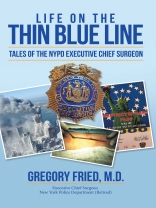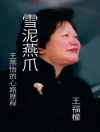When youre a surgeon, the smallest mistake could result in someone losing their life.
Gregory Fried, M.D., who became NYPDs executive chief surgeon in November 1996, after years of serving as deputy chief surgeon, knows this all too well.
Responding to police officers being shot or seriously injured in the line of duty, however, brings the pressure to an even higher levelespecially in the middle of one of the worst crime waves in New York Citys history.
Looking back at a career that began in the 1970s and continued beyond the September 11 terrorist attacks, Fried shares numerous stories of brave patients that battled life-threatening illnesses and injuries.
He also recalls the out-of-control violence that spread throughout New York during his years of service. It was open season on police officers, and he gives readers an intimate look at the life of a police surgeon and what really happens when a police officer is shot in the line of duty.
Fried also relives the nightmare of surviving the collapse of the South Tower on Sept. 11, 2001. Broken ribs, herniated disks, fractured bones in his spine, and a massive internal bleed would effectively end his surgical career, but it did nothing to dampen his spirit.
Despre autor
Gregory Fried, M.D., F.A.C.S., attended Cornell University and NYU Medical School. He began his career at Bellevue Hospital as a general surgeon and became the Executive Chief Surgeon for the New York Police Department. He was a first responder on 9/11 and was almost killed when the South Tower collapsed. While the terrorist attacks effectively ended his surgical career, he continues to stay active pursuing numerous civic and private interests.












